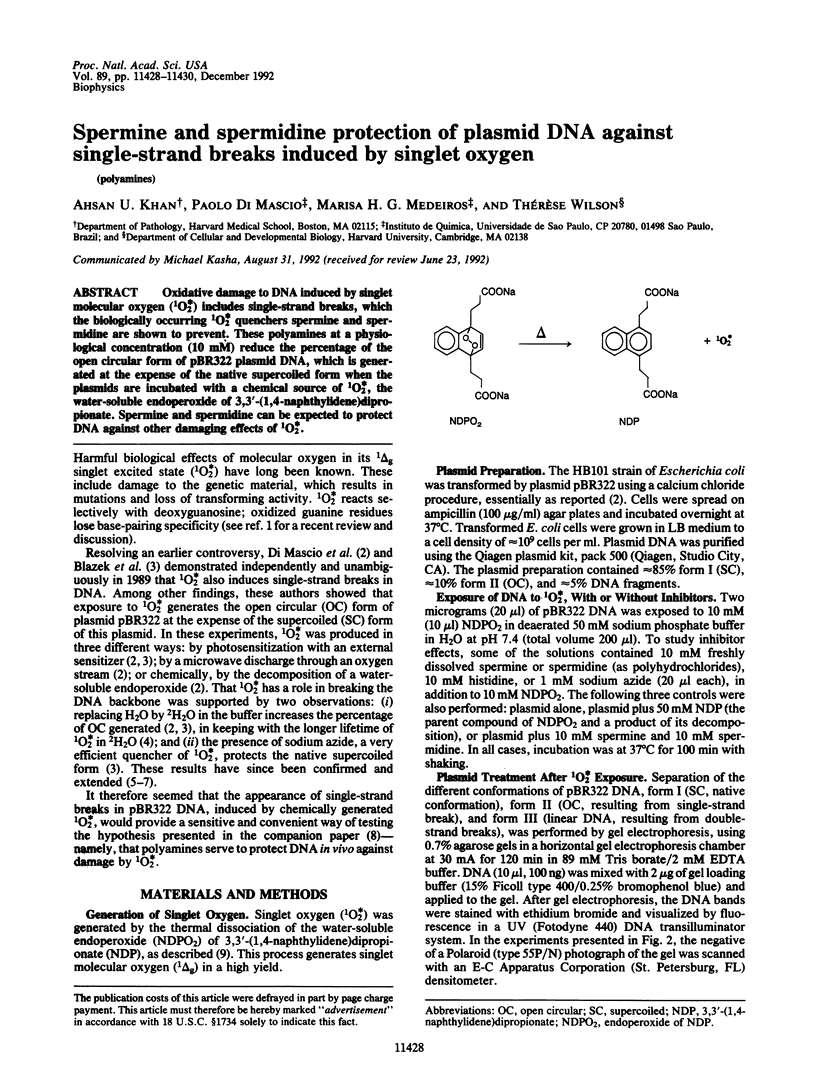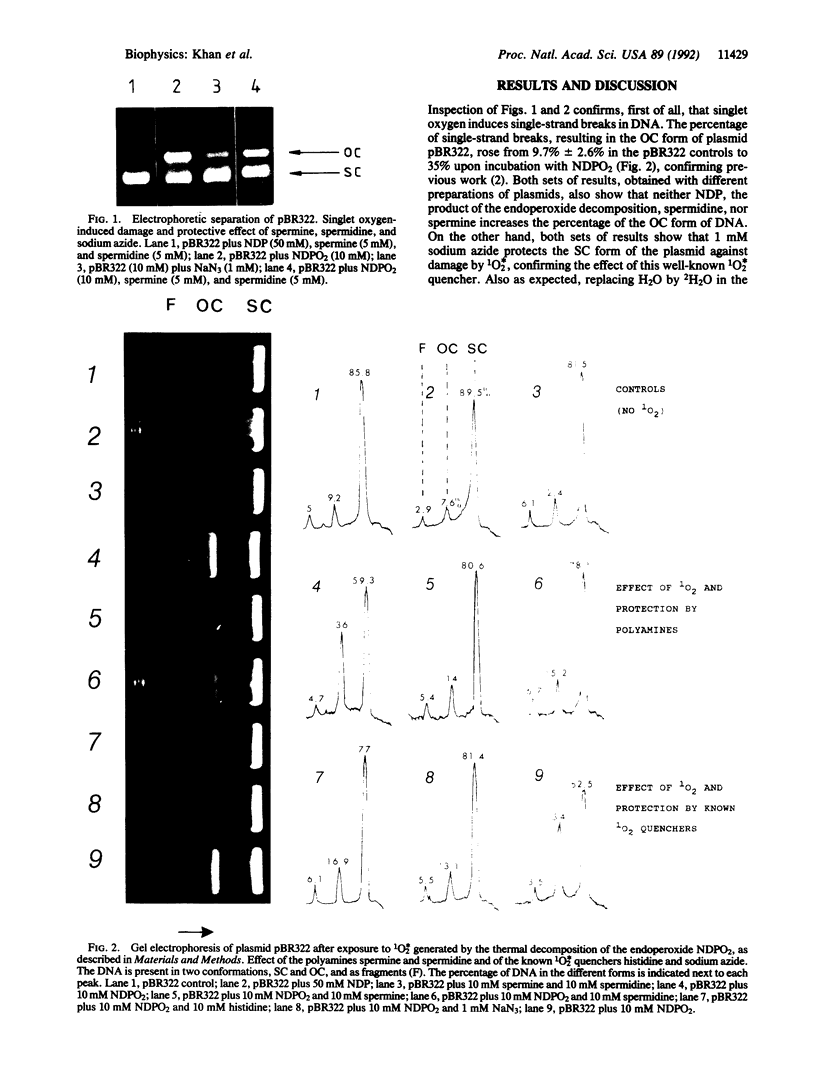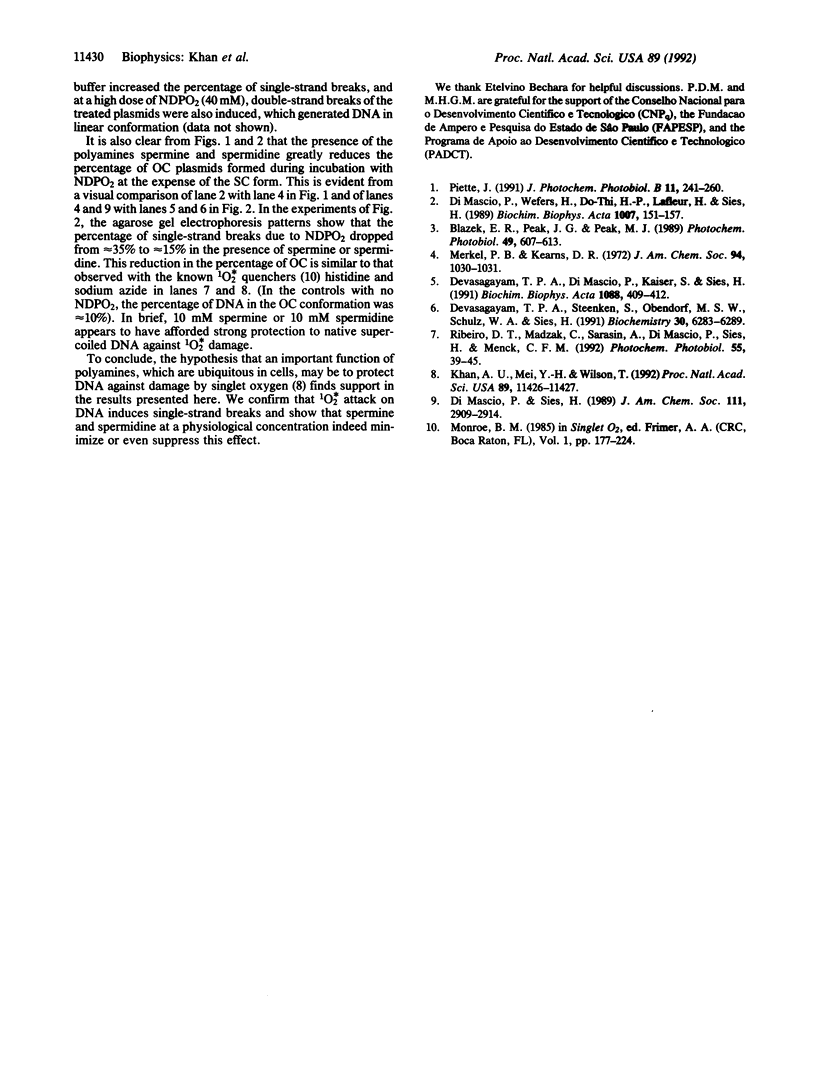Abstract
Oxidative damage to DNA induced by singlet molecular oxygen (1O2*) includes single-strand breaks, which the biologically occurring 1O2* quenchers spermine and spermidine are shown to prevent. These polyamines at a physiological concentration (10 mM) reduce the percentage of the open circular form of pBR322 plasmid DNA, which is generated at the expense of the native supercoiled form when the plasmids are incubated with a chemical source of 1O2*, the water-soluble endoperoxide of 3,3'-(1,4-naphthylidene)dipropionate. Spermine and spermidine can be expected to protect DNA against other damaging effects of 1O2*.
Full text
PDF


Images in this article
Selected References
These references are in PubMed. This may not be the complete list of references from this article.
- Blazek E. R., Peak J. G., Peak M. J. Singlet oxygen induces frank strand breaks as well as alkali- and piperidine-labile sites in supercoiled plasmid DNA. Photochem Photobiol. 1989 May;49(5):607–613. doi: 10.1111/j.1751-1097.1989.tb08431.x. [DOI] [PubMed] [Google Scholar]
- Devasagayam T. P., Di Mascio P., Kaiser S., Sies H. Singlet oxygen induced single-strand breaks in plasmid pBR322 DNA: the enhancing effect of thiols. Biochim Biophys Acta. 1991 Mar 26;1088(3):409–412. doi: 10.1016/0167-4781(91)90133-7. [DOI] [PubMed] [Google Scholar]
- Devasagayam T. P., Steenken S., Obendorf M. S., Schulz W. A., Sies H. Formation of 8-hydroxy(deoxy)guanosine and generation of strand breaks at guanine residues in DNA by singlet oxygen. Biochemistry. 1991 Jun 25;30(25):6283–6289. doi: 10.1021/bi00239a029. [DOI] [PubMed] [Google Scholar]
- Di Mascio P., Wefers H., Do-Thi H. P., Lafleur M. V., Sies H. Singlet molecular oxygen causes loss of biological activity in plasmid and bacteriophage DNA and induces single-strand breaks. Biochim Biophys Acta. 1989 Mar 1;1007(2):151–157. doi: 10.1016/0167-4781(89)90033-x. [DOI] [PubMed] [Google Scholar]
- Khan A. U., Mei Y. H., Wilson T. A proposed function for spermine and spermidine: protection of replicating DNA against damage by singlet oxygen. Proc Natl Acad Sci U S A. 1992 Dec 1;89(23):11426–11427. doi: 10.1073/pnas.89.23.11426. [DOI] [PMC free article] [PubMed] [Google Scholar]
- Piette J. Biological consequences associated with DNA oxidation mediated by singlet oxygen. J Photochem Photobiol B. 1991 Dec;11(3-4):241–260. doi: 10.1016/1011-1344(91)80030-l. [DOI] [PubMed] [Google Scholar]
- Ribeiro D. T., Madzak C., Sarasin A., Di Mascio P., Sies H., Menck C. F. Singlet oxygen induced DNA damage and mutagenicity in a single-stranded SV40-based shuttle vector. Photochem Photobiol. 1992 Jan;55(1):39–45. doi: 10.1111/j.1751-1097.1992.tb04207.x. [DOI] [PubMed] [Google Scholar]




